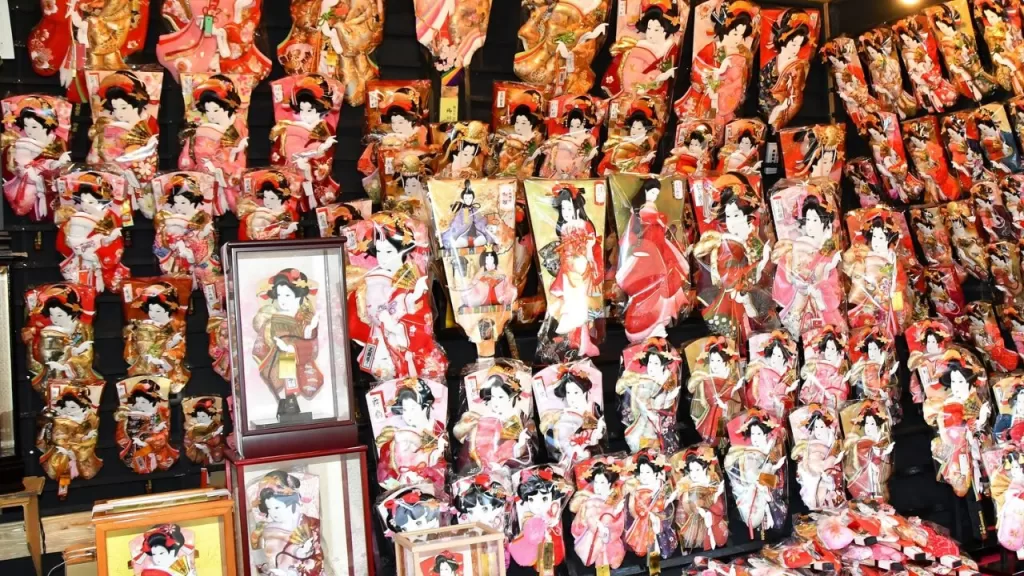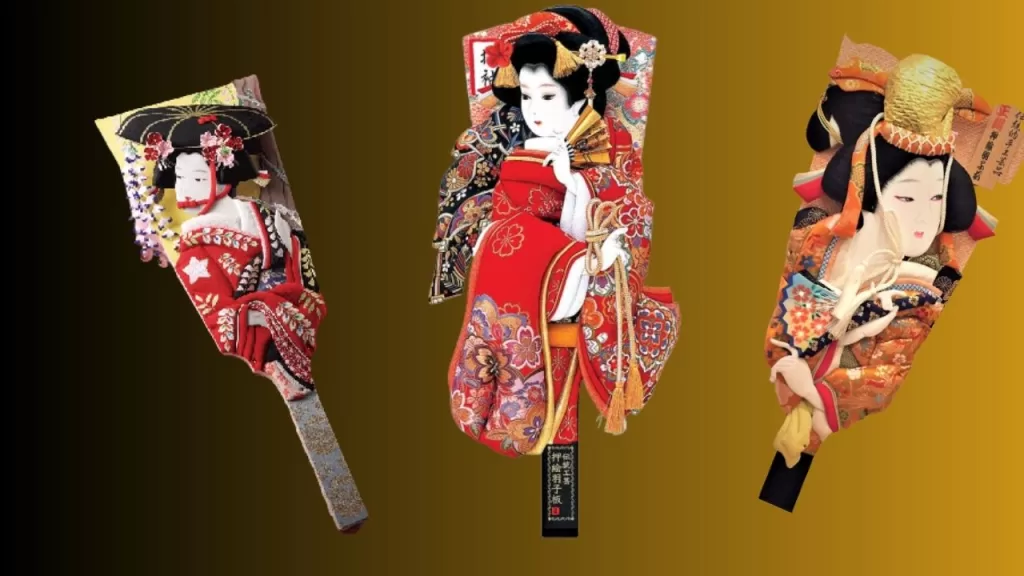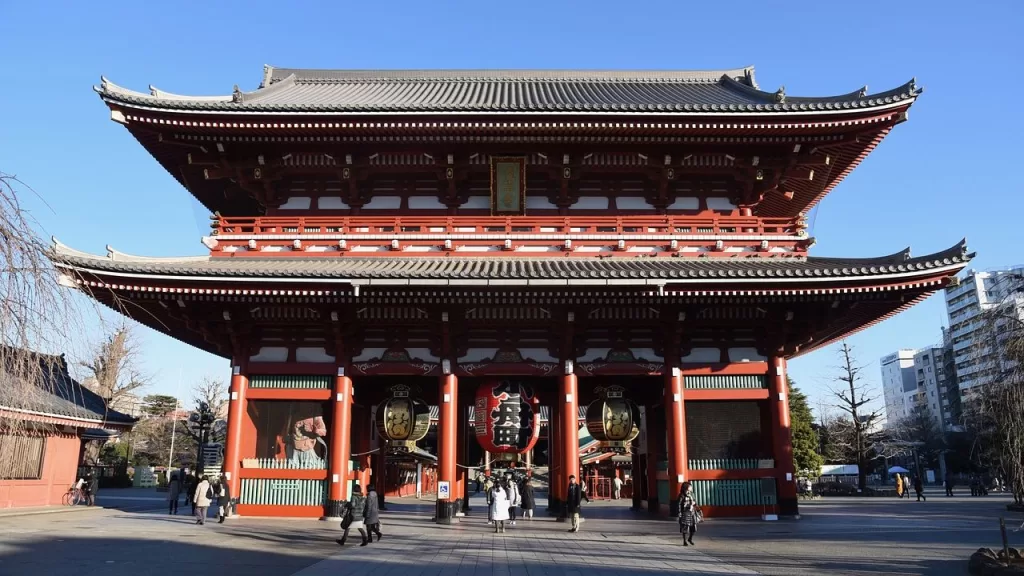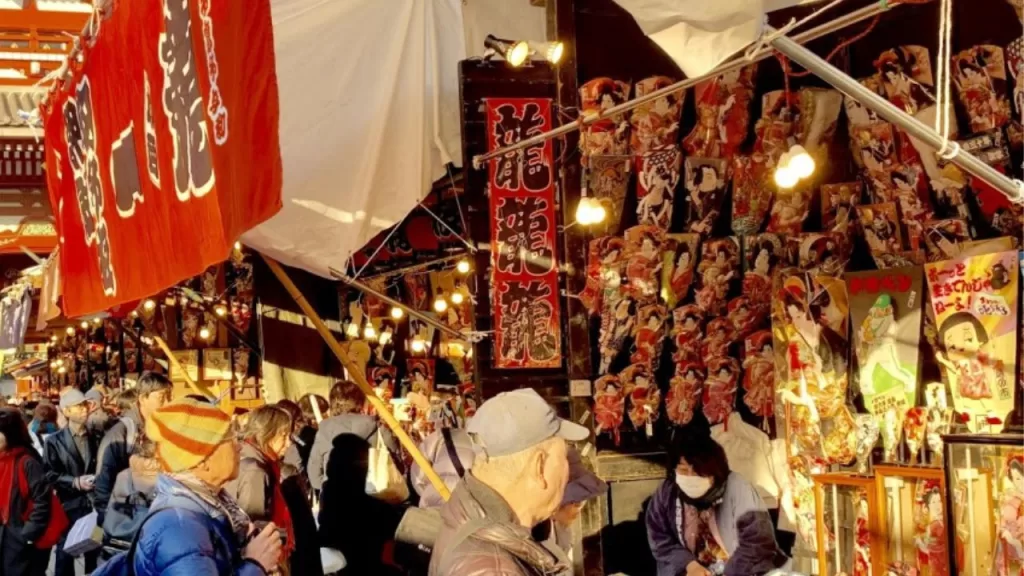Asakusa’s Sensōji Temple Hagoita-Ichi Fair Continues Grand Tradition of Good Luck
Sensōji Temple Hagoita-Ichi Fair

Experience the vibrant Tokyo Events in December at the annual Sensōji Temple Hagoita-Ichi Fair.
Hagoita-Ichi, a widely anticipated year-end event in Tokyo’s historic Asakusa district, sees the bustling area around Sensōji Temple filled with vibrant vendors peddling traditional crafts, fascinating toys, and good luck charms. The centerpiece of this three-day fair is ‘hagoita,’ ornamental bats carrying deep cultural significance, capturing festive vibes, and summoning a successful New Year.
Symbolic Features of Hagoita
Hagoita, an integral part of Japanese heritage, are rectangular wooden paddles originally purposed for playing hanetsuki—a sport resembling badminton. However, these paddles have been embellished over the years into ornate artifacts that ward off bad luck to welcome a prosperous new year.

The intricate designs covering the hagoita reflect various elements of Japanese culture. These decorative objects often feature kabuki actors, beautiful women, groovy children’s toys, and popular celebrities drawn from various realms such as sports, TV shows, and movies. In addition to these designs, uke-eto or Japanese zodiac-themed hagoita contribute to the vast range available to purchase during this market from the Hagoita Preservation Society stationed near Sensōji Temple’s five-story pagoda.

Hagoita-Ichi Fair: A Grand Celebration of Tradition
Held annually from December 17th – 19th at Sensōji Temple—the oldest temple in Tokyo—Hagoito-Ichi remains an unparalleled celebration of tradition juxtaposing conveniently within Japan’s modern metropolis.
Hours for this lively fair stretch from 9:00 am to 9:00 pm across three days. In front of Sensoji’s main hall grow fifty open-air stalls displaying myriad hagoitas adorned with various themes. Shoppers can expect cheers of celebration from sales staff upon every purchase—an acknowledgment of their investment in cultural preservation and personal good luck for the New Year.
The Evolution of Hagoita-Ichi Fair
Initially, a practice symbolizing wishes for young girls’ health and growth, Hagoito has since evolved into a symbol of general well-being and success for all during the Meiji era. Their ornamental appearance owes its diversity to styles borrowed from television personalities, sports stars, and cartoon characters.

Beyond Sensōji: the Expansion of the Hagoito Industry
Those residing closer to Saitama can visit Kasukabe’s Hagoita Market—a significant source of manufacturing most hagoitas sold at Asakusa.
Thereby adding robustness to the depth and reach of this pivotal cultural practice spanning centuries in Japan – offering an immersive experience that transcends borders effectively.
Immerse yourself in the magical atmosphere of the Sensōji Temple Hagoita-Ichi Fair during the 47 Rōnin Winter Festival.